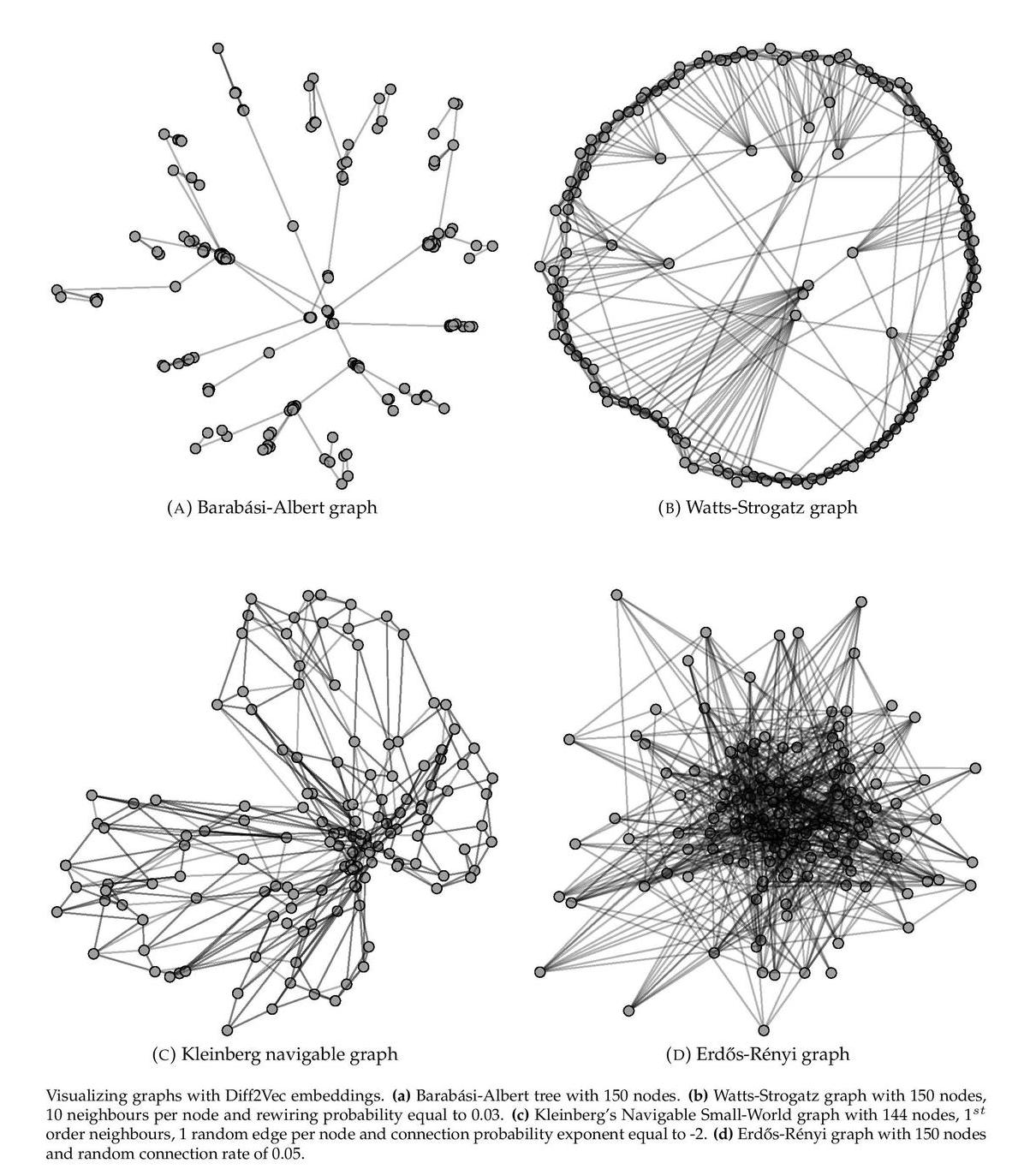Diffusion to vector is a transductive topological graph embedding procedure inspired by other sequence based graph embedding procedures. Sequences are generated by a linearized branching process. It is robust to graph densification and growth. The created embeddings are competitive with other sequence based embedding methods (e.g. DeepWalk/Node2Vec). It can be used to learn embeddings of networks with millions of nodes and it allows for parallel processing in the sequence generation and learning phases.
This repository provides a reference implementation for Diff2Vec as described in the paper:Fast Sequence Based Embedding with Diffusion Graphs. Benedek Rozemberczki and Rik Sarkar. International Conference on Complex Networks, 2018. http://homepages.inf.ed.ac.uk/s1668259/papers/sequence.pdf
If you find Diff2Vec useful in your research, please consider citing the following paper:
@inproceedings{rozemberczki2018fastsequence,
title={Fast Sequence Based Embedding with Diffusion Graphs},
author={Rozemberczki, Benedek and Sarkar, Rik},
booktitle={International Conference on Complex Networks},
year={2018} }
The codebase is implemented in Python 3.5.2 | Anaconda 4.2.0 (64-bit).
tqdm 4.28.1
numpy 1.15.4
pandas 0.23.4
texttable 1.5.0
gensim 3.6.0
networkx 2.4
joblib 0.13.0
logging 0.4.9.6
The code takes an input graph in a csv file. Every row indicates an edge between two nodes separated by a comma. The first row is a header. A sample graph for the `Facebook Restaurants` dataset is included in the `data/` directory.
Learning of the embedding is handled by the `src/diffusion_2_vec.py` script which provides the following command line arguments.
--input STR Path to the edge list csv. Default is `data/restaurant_edges.csv`
--output STR Path to the embedding features. Default is `emb/restaurant.csv`
--model STR Embedding procedure. Default is `non-pooled`
--dimensions INT Number of embedding dimensions. Default is 128.
--vertex-set-cardinality INT Number of nodes per diffusion tree. Default is 80.
--num-diffusions INT Number of diffusions per source node. Default is 10.
--window-size INT Context size for optimization. Default is 10.
--iter INT Number of ASGD iterations. Default is 1.
--workers INT Number of cores. Default is 4.
--alpha FLOAT Initial learning rate. Default is 0.025.
The following commands learns a graph embedding and writes it to disk. The first column in the embedding file is the node ID.
Creating an embedding of the default dataset with the default hyperparameter settings.python src/diffusion_2_vec.py
Creating an embedding of an other dataset the Facebook Politicians.
python src/diffusion_2_vec.py --input data/politician_edges.csv --output output/politician.csv
Creating an embedding of the default dataset in 32 dimensions, 5 sequences per source node with maximal vertex set cardinality of 40.
python src/diffusion_2_vec.py --dimensions 32 --num-diffusions 5 --vertex-set-cardinality 40



